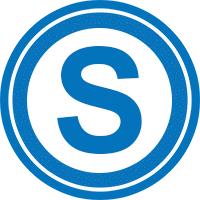Electronic embroidery, also known as computer embroidery, is the process of embroidery using a computer-powered embroidery machine. The design is created by an embroidery computer program, and is entered into the machine to convert the design into stitches on the fabric.
The electronic embroidery machine consists of two main parts: the first part is the computer that allows you to enter the design and control the operation of the machine, and the second part is the machine head that contains the needle, spindle, and cylinder that moves the fabric.
The electronic embroidery process is used in the production of clothing, decorative fabrics, upholstery, and the decoration of covers, bags, shoes, and other textile products. This technology provides accurate, diverse and repeatable designs with high accuracy, making it popular in various textile industries.
How to do electronic embroidery?
Electronic embroidery is done by following these steps:
- Design: An embroidery design is created using an embroidery computer program, and may use photos, graphics, text, or other designs.
- Conversion: The file containing the design is converted into a format that can be read by an electronic machine. This is done using a conversion program that converts the file into a format suitable for the machine.
- Fabric fixation: The fabric to be embroidered is fixed between two moving frames of the machine.
- Preparation: The machine is prepared by securing and preparing the appropriate threads and adjusting the machine according to the type of fabric and design required.
- Embroidery: The machine is turned on and the embroidery process begins, following the lines specified in the design. Embroidery may take a different time depending on the size and complexity of the design.
- Cleaning: The frames are removed and the fabric and machine are carefully cleaned to maintain the integrity of both.
Electronic embroidery requires special skills to ensure good results, and the manufacturer’s instructions must be followed carefully to get the best results.
What materials can be used in electronic embroidery?
A variety of materials can be used in e-embroidery, including:
- Cotton fabrics: Cotton fabrics are suitable for embroidery because of their softness and elasticity.
- Silk: Silk can be used in e-embroidery to give products a more luxurious and sparkling look.
- Wool: Wool is a good choice for e-embroidery on winter and warm products.
- Leather: Leather can be used in electronic embroidery to decorate bags, shoes and leather clothing.
- Plastic: Plastic products such as covers, bags, etc. can be embroidered using electronic embroidery machines.
- Synthetic Fabrics: Synthetic fabrics such as polyester and nylon can be used for e-embroidery.
- Adhesives: Adhesives such as adhesive film can be embroidered to get a decorative look on products.
- Non-woven fabric: Non-woven fabric can be used in e-embroidery to give products a different look.
These are some of the common materials that can be used in electronic embroidery, and more materials can be used depending on the type of machine and working method used.
How much does an electronic embroidery machine cost and can it be suitable for home use?
The cost of an electronic embroidery machine varies greatly depending on the brand, model, size of the machine, and level of technology used in it. Small machines suitable for home use can range in price from $500 to $2,000, and larger, more advanced machines can cost several thousand dollars.
An electronic embroidery machine can be suitable for home use, but before purchasing one must study the individual’s usage requirements and the products he wants to embroider and ensure that the machine includes features that meet these needs. You should also consider the size of the machine and how easy it is to store and use at home.
Although an electronic embroidery machine can be a bit expensive, it pays off well in the long run as it allows an individual to create and design unique products themselves, and can be used to improve the business and increase productivity and quality.
What software is used in electronic embroidery and how to use it?
There are many programs used in electronic embroidery, and these are some examples:
- Embroidery Design Program: It is a program used to create embroidery designs on the computer. It allows the user to create new designs, or modify existing designs, and the design can be saved in different formats.
- Design conversion program: It is used to convert the file containing the design into a format that can be read by the electronic machine. This is done using a conversion program that converts the file into a format suitable for the machine.
- Embroidery simulation programs: These programs are used to simulate the electronic embroidery process with high accuracy, and can be used to identify potential errors before embroidery begins.
- Embroidery Management Software: Helps manage the embroidery process by setting times and tasks and updating production orders. They can be used for large and complex embroidery projects.
To benefit from these programs, the user must first choose the appropriate program for the planned use, then learn how to use it by reading the user manual and watching educational videos available on the Internet. After that, the user can start creating designs and converting them into a machine-friendly format, and begin the embroidery process effectively and efficiently.
Are there free programs for embroidery design?
Yes, there are many free programs available for embroidery design. Among these programs are:
- Ink/Stitch: This is a free, open source embroidery design program. It allows users to easily create embroidery designs on the computer, and supports SVG and EPS files.
- My Editor: is a free and easy-to-use embroidery design software. The software supports various embroidery design files, and allows users to create new designs with easy-to-use tools.
- Embroidermodder: Another free open source embroidery design program. It allows users to create different embroidery designs, and the program supports many different types of design files.
- SewArt: is a free embroidery design program that supports many different types of design files. It provides advanced editing tools to create unique embroidery designs.
Of course, there are many other free programs available online that can be used to create different embroidery templates.
What are the tips and steps needed to avoid errors in electronic embroidery?
You can take a number of steps and follow some tips to avoid mistakes in electronic embroidery, which are as follows:
- Check the machine, needle, and thread before starting embroidery.
- Make sure to use the appropriate type of needle for the type and thickness of the fabric.
- Keep the machine, needle, garment and fabric clean and make sure to remove dust and dirt.
- Avoid using cheap quality or no longer usable threads.
- Make sure to use the appropriate settings for the type of fabric and type of embroidery being used.
- Choose the appropriate type of frame for the fabric used and make sure it is installed well and securely.
- Monitor the machine during the embroidery process to ensure that no malfunctions occur.
- Stop the machine and change the needle regularly to avoid bending or breaking the needle.
- Check that the machine speed is set to the correct settings and that the speed does not exceed the specified limits.
- Make sure you use the correct software and update it regularly.
By following these tips and steps, you can avoid errors in electronic embroidery, maintain the quality of work, and improve embroidery results.
Is it possible to control the machine speed during electronic embroidery?
Yes, the machine speed can be controlled during the electronic embroidery process. Electronic embroidery machines are available with different options for adjusting the speed of the machine, where the user can effectively control the needle speed and mechanical movement.
Adjusting the machine speed improves the quality of embroidery and reduces the risk of errors and distortions in embroidered products. The machine speed can be adjusted manually or automatically using specific settings, and the user can control the machine speed during embroidery in sync with the process requirements.
Adjusting the machine speed can be used to improve productivity and reduce the time it takes to complete projects. It can also be used to determine the ideal embroidery speed for different products and fabrics used, achieving optimal efficiency in the embroidery process.
How to clean and maintain an electronic embroidery machine?
Cleaning and maintaining the electronic embroidery machine helps maintain its optimal performance and ensure efficient and proper business continuity. Here are some steps that can be followed to clean and maintain your electronic embroidery machine:
- Make sure to unplug the device before you start cleaning it.
- Use a soft, clean cloth to clean the surface of the machine and the digital screen (if available).
- Use a small hand vacuum
What is the maximum size of design that can be embroidered using the machine?
The answer to this question varies depending on the type of embroidery machine and its manufacturer. However, in general we can say that the maximum size of a design that can be machine embroidered depends on the size of the frame being used.
In general, most modern machines offer different sized mounting frames, which allow users to embroider designs of different sizes. Some machines can provide the ability to electronically change the size of the design, providing users with more flexibility in choosing the size of the design they wish to embroider.
Can online design software be used to design embroidery templates?
Yes, online design software can be used to design embroidery templates. These programs provide easy-to-use interfaces and advanced tools for designing graphics and text and converting them into embroidered designs.
It is worth noting that some of these programs are specifically designed to meet the needs of users who want to create custom embroidery designs, and are designed to work well with many different types of design files.
But you must be aware that using programs available online to design embroidery templates requires some basic skills and knowledge of design and embroidery, in order to create high-quality and smooth embroidery designs.
What types of fabrics can be used for electronic embroidery and what are the appropriate settings for each type?
Many types of fabrics can be used in electronic embroidery, including:
- Cotton: Cotton is a very popular material in electronic embroidery, as it holds up to embroidery on cotton easily. A cotton cutting needle and cotton thread must be used.
- Silk: Silk is a wonderful, soft material for electronic embroidery, but you must adjust the machine settings to use a thin needle and thread and reduce the machine speed, to avoid fraying or damaging the silk.
- Wool: Wool is also a suitable material for electronic embroidery, a fine needle and fine wool thread can be used.
- Polyester: Polyester can be used as the base material for electronic embroidery, and can use polyester cutting needle and polyester thread.
The appropriate settings for each type of these materials vary, depending on the characteristics of each material, and therefore the appropriate settings must be determined for each type of material used, such as the type of needle and thread, machine speed, and pressure on the fabrics. You must check the machine settings before starting embroidery, and try embroidery on samples of different fabrics before starting embroidery on the final piece.
SAMEEM, Digital Marketing Agency in the Middle East, has been involved in design, marketing, creating and promoting for more and ambitious brands since 2010.

